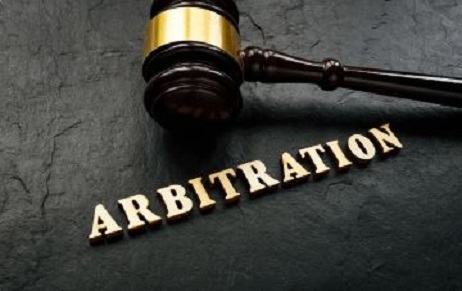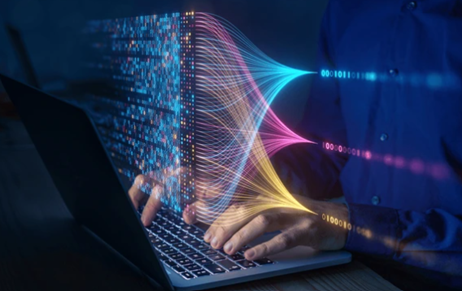The Southeast Asian regional grouping known as ASEAN is undoubtedly one of the most dynamic…
Assessing Global trends on Artificial Intelligence in International Commercial Arbitration: The Indian Outlook
Abstract
In this article, the author aims to explore the interplay of Artificial Intelligence [hereinafter “AI”] in international commercial arbitration specifically raising questions on the impact of AI on impartiality, confidentiality and the role of arbitrators for this. The article analyses the contemporary and latest regulations including the SVAMC guidelines, the European Union Artificial Intelligence Act [hereinafter “EU AI Act”], the JAMS rules on arbitration and a few others to highlight the focus on the issues faces because of this integration and what are the possible solutions for maintaining confidentiality, specially with regards to duty of disclosure. The article then shifts to discussing India’s approach, noting that there is an absence of specific rules and emphasising the need for guidance. The Article concludes by emphasising on a need of Indian framework on AI in arbitration to bolster is pro-arbitration stance.
The integration of Artificial Intelligence into judicial processes as well as possibly into the alternative dispute resolution mechanisms is becoming more and more prevalent. For international commercial arbitration, it becomes crucial to delineate exactly why and for what purposes is AI being used. Any compromise with maintaining the standards of arbitration because of AI, specially impartiality and confidentiality, will be hazardous. It raises a lot of new questions: Can AI be an arbitrator? Can AI be used only to assist in arbitration or can it completely pass an award? What challenges would occur in enforcing an AI award? Would impartiality be an issue? More interestingly, if AI is only being used to assist in arbitration, what are the limits to that? Would there be a duty of disclosure when using an AI? Would Data Privacy and confidentiality be compromised if AI is used to assist arbitration procedure?

While these are only preliminary questions on what might be needed to be addressed if AI is brought into international commercial arbitration, the recent trends globally suggest that the need for regulation has already been addressed. To begin with, the Silicon Valley Arbitration and Mediation Centre (SVAMC) introduced regulations to ensure ethical and effective AI use in arbitration.[1] The European Union Artificial Intelligence Act, 2024 also addresses the integration of AI into judicial authorities; however does not specifically mention arbitration.[2] The recent International council for Commercial Arbitration Congress at Hong Kong attempted to address the “AI Endeavour” in international arbitration acknowledging legal research tools assisting in official documentation and allied processes, however these are highly unregulated leading to issues like breach of party documents.[3] Not to mention, like the 7th Draft of SIAC rules, various institutions are moving towards “environmentally sustainable” ways of conducting arbitration that might in future require AI for reducing documentation and dependence on AI technologies for conducting arbitration.[4]
Amidst this wave of changes that are calling for authorities to address AI in arbitration, is Indian arbitration sphere prepared for such a change? It becomes important to see if in India, whether by the AC Act or by institutions such as DIAC and MCIA, can this upcoming discussion be addressed. This article aims to look at the global trends addressing AI in arbitration and further look at it from an Indian perspective.
The Global Perspective
The first to address AI specifically in arbitration and to further lay down proper guidelines is the SVAMC guidelines. Their comprehensive guidelines provide a structured approach to integrating AI, with special focus on issues of transparency, fairness and accountability. This is a step for formalization of AI into arbitration. These also provide for a model clause to ensure consistency and reliability across various cases. The intent is to cover all arbitration participants and procedures by delineating general principles, as well as specific guidelines for uses by the parties and special considerations to be kept in mind for arbitrators. An underlying principle in these guidelines is that AI cannot completely and entirely replace the arbitrator as it is necessary for arbitrators to independently analyse facts, law and evidence to ensure that AI tools do not replace human judgment. This is found in Guideline 6.[5]
To go into the specifics of these guidelines, a key component here is a general obligation to disclose AI use found under Guideline 3.[6] It indicates that if at all AI is making a material impact on the arbitration then a duty of disclosure is warranted, however the disclosure is not necessary as a general matter.
Specifically, Guideline 2 deals with maintaining confidentiality, requiring an analysis of the data use and retention policies of the AI being used. This is to be read with the different jurisdictional rules on confidentiality, secrecy and privilege of information.[7] Here, first not all jurisdictions address the problem of confidentiality specifically with regard to AI in judicial processes, and second, a deep understanding of the data retention policies would be required by the participants if the confidentiality is to be maintained. This Guideline is very important to maintain the bedrock of international commercial arbitration, which is confidentiality.
The second is the recent EU AI Act, which is in fact the first regulation to deal with AI in particular. The approach taken by this legislation is to create categories based on the level of risk and AI poses. Obligations are thus created based on whether the AI is having a minimal risk, unacceptable risk, high risk and so on. The act also presents transparency requirements putting an obligation for disclosure that the content was generated by AI. Any Generative AI used will have to meet the requirements of the EU Copyright law. As on the lines of the SVAMC guidelines, this Act also requires “informed deployment” of AI where the users must know its limits, harms and consequences, which can essentially be called as AI literacy. The act although does not specifically mention arbitration or international commercial arbitration, as opposed to the SVAMC guidelines. But it does give a reference to AI systems being used in “alternative dispute resolution”. This is termed to be a high-risk situation, specially when AI is being used for interpreting the facts and applying the law which produces significant legal effects for the parties.
The Act goes on to further put obligations on “deployer” of AI pertaining to high risks where they have to take appropriate measures to ensure the use of AI is correct and ensure that relevant and sufficient data is being provided. Further obligations have been provided. The question boils down to whether the arbitrator or a party or an expert in an arbitration using tools for lets say preparation of evidence and documentary submissions, or lets say the witness testimony would fall under “deployer”, because then all these obligations would be applied and strictly needed to be followed.
It is important to note here that all these obligations when not followed lead to sanctions, whether in the form of financial sanctions or otherwise. Hence, their application into arbitration needs to be explained and clarified further. It becomes dicey when application of this EU AI Act is to be seen in international commercial arbitrations where the parties are not just limited to EU or its territory. Whether still these have to follow the obligations of the EU AI Act, or whether an arbitrator sitting in India would need to apply and abide by EU AI Act if one of the parties is from EU remains a question. The complexities of the application of this Act for international commercial arbitration need to be addressed further.
Third, JAMS, a service provider in arbitration, also attempted to issues guidelines for this interplay however these were focused on disputes involving AI systems, as in, where the subject of the dispute itself is an AI technology to prevent exchange of trade secrets or other sensitive information.[8]
Apart from guidelines and legislations, other developments addressing AI in arbitration include conferences and meetings like the ICCA Hong Kong Conference, 2024 that addressed in one of its panels about the AI Endeavour in international arbitration. Based on its surveys, some institutions opted for applying AI mechanisms for case briefings, management and logistical uses focusing on informed application. Some, although very few, highlighted the need of employing coders and engineers in the form of a working group specifically for AI use. All these early deployers of AI hence hint on using AI only for improving efficiency as opposed to complete revolutionizing of international commercial arbitration.
AI in Courts
While the regulation and discussion of AI in arbitration is meagre, that is not the case with courts. This integration has seen significant developments. The US uses Correctional Offender Management Profiling for Alternative Sanctions (COMPAS) for tracking and analysing criminal history and mental health of offenders, building a risk assessment structure. The US Sentencing Commission also uses AI for sentencing guidelines. China, on the other hand, uses the Smart Court system for making recommends in sentences, suggesting laws and analysing past cases. Notably, the “China Judgments Online” platform works as a tool for legal research.
However, these advancements are confined to courts and litigation whereas the picture is unclear for arbitration, and even more ambiguous for international commercial arbitration which needs a universal framework.
The New Zealand Court, for example, in fact has guidelines for use of generative AI in courts and tribunals. The guidelines for judges, judicial officers, tribunal members and judicial staff provide a list of institutions where these would be applicable, which includes “disputes tribunal”.[9] This may apply to a tribunal under the New Zealand national law. However, the need is to see if uniform rules like these are present in the international picture.
Has India addressed this interplay between AI and arbitration sufficiently?
India seeks to develop the Online Dispute Resolution (ODR) picture with efficient operation of AI and technology for judicial processes. Therefore, what can be seen is that India is looking forward for adopting new technologies in dispute resolution landscape. However, there have been no guidelines for their operation.
It needs to still address questions relating to AI operations in both judicial and arbitration landscape. Unlike the New Zealand courts, India does not have clear guidelines for usage of AI in judicial or arbitration proceedings. Indian judiciary nevertheless has stepped into integrating AI in judicial administration processes, for example, the Supreme Court Vidhik Anuvaad Software (SUVAS) and the Surpreme Court Portal for Assistance in Court Efficiency (SUPACE) are tools for streamlining documents and digitalizing judicial processes through proper regulation.
Arbitration institutions such as the Mumbai Centre for International Arbitration (MCIA) recently in its ADR Week in October, 2023 had kept discussion on “ChatGPT and AI in arbitrations”, showing a growing trend for addressing this interplay. However, despite such discussions, there is a large gap for regulation of AI either domestically or internationally in arbitrations.[10] More recently, the Delhi Arbitration Week, 2024 had a “technology panel” that emphasised on taking active measures for implementation of technology in arbitration, acknowledging that while the Supreme Court is focusing on use of technology for case management, it needs to be explored whether the same could be successfully implemented in arbitration. It was highlighted that Ai itself is in its nascent stage possessing its own challenges, and thus, it would be wise to only use it for administrative purposes as opposed to a possible replacement for any existing procedure in arbitration. This is also due to the potential threat of fabricating case laws and evidences.[11]
Why it is important to have either separate guidelines like the SVAMC guidelines, or a separate legislation like the EU Act, is because the Arbitration and Conciliation Act, 1996 [hereinafter “AC Act”] is silent or unclear on this proposition.
Certainly, the dominant understanding in arbitration landscape is that the arbitrator shall be a natural person, the AC Act does not put a bar on appointment of an AI as arbitrator. Some arbitral rules of institutions mention appointment of a “natural person” as an arbitrator, in which case AI cannot be appointed. However, this is not the case with the AC Act.
Moreover, although the AC Act does not bar the appointment, it is itself not equipped to deal with the consequences if at all AI is appointed as arbitrator as Section 12(3)(a) talks about maintaining impartiality and challenging the appointment on the grounds of bias.[12] Further, would the duty of disclosure, as on a natural person arbitrator, apply equally to an AI arbitrator under the AC Act also remains a question. Additionally, whether or not the use of AI for assistance calls for any obligations to be fulfilled by the arbitrator or the parties under the AC Act has not been addressed altogether.
It becomes therefore all the more important to either amend the Act or bring separate guidelines if India wants to pursue its pro-arbitration stance.
Conclusion
With endless discussions and debates on the topic of AI in arbitration, it is only the beginning of the interplay between the two arenas. The arbitral institutions and arbitration community still has time on its hand before substantial issues crop up. India needs to swiftly address this wave of change and bring in guidelines either through is arbitral institutions such as DIAC or MCIA, or bring in amendments to the AC act itself. The international arbitration community on the other hand also has to take into consideration the SVAMC guidelines and build a robust framework on building a universal and trustworthy framework on AI in international arena.
Author: Srishti Pandey, in case of any queries please contact/write back to us via email to chhavi@khuranaandkhurana.com or at IIPRD.
[1] Felix Kasseroler, From Draft to Published Version: A Commentary on the changes implemented in the SVAMC AI Guidelines, Kluwer Arbitration Blog (June 21, 2024), < https://arbitrationblog.kluwerarbitration.com/2024/06/21/from-draft-to-published-version-a-commentary-on-the-changes-implemented-in-the-svamc-ai-guidelines/#:~:text=The%20Silicon%20Valley%20Arbitration%20and,within%20the%20international%20arbitration%20community.>.
[2] European union, Eu AI Act: The first regulation on artificial intelligence (June 8, 2023), <https://www.europarl.europa.eu/topics/en/article/20230601STO93804/eu-ai-act-first-regulation-on-artificial-intelligence>.
[3] Stanimir Alexandrov, ICCA Hong Kong 2024: “International Arbitration: A Human Endeavour”, Kluwer Arbitration Blog (May 5, 2024), <https://arbitrationblog.kluwerarbitration.com/2024/05/05/icca-hong-kong-2024-international-arbitration-a-human-endeavour/.>.
[4] Anjali Anchayil, The 2023 SIAC Draft Rules: Raising the Bar of Efficiency, Kluwer Arbitration Blog (October 26, 2023), <https://arbitrationblog.kluwerarbitration.com/2023/10/26/the-2023-siac-draft-rules-raising-the-bar-for-efficiency/>.
[5] Sillicon Valley Arbitration And Mediation Centre, SVAMC Guidelines on Use of Artificial Intelligence in Arbitration, Guideline 6.
[6] Sillicon Valley Arbitration And Mediation Centre, SVAMC Guidelines on Use of Artificial Intelligence in Arbitration, Guideline 3.
[7] Sillicon Valley Arbitration And Mediation Centre, SVAMC Guidelines on Use of Artificial Intelligence in Arbitration, Guideline 2.
[8] Surya Gopalan, JAMS unveils new arbitration rules for artificial intelligence disputes, White & Case Blog (May 3, 2024), < https://www.whitecase.com/insight-our-thinking/jams-unveils-new-arbitration-rules-artificial-intelligence-disputes>.
[9] Courts of new zealand, Guidelines For Use Of Generative Artificial Intelligence In Courts And Tribunals (December 7, 2023), <https://www.courtsofnz.govt.nz/going-to-court/practice-directions/practice-guidelines/all-benches/guidelines-for-use-of-generative-artificial-intelligence-in-courts-and-tribunals/>.
[10] Bar & Bench, MCIA- India Adr Week, 2023 to Start From October 9, Bar Bench (September 7, 2023), < https://www.barandbench.com/news/mcia-india-adr-week-2023-to-start-from-october-9>.
[11] Rimali Batra, Delhi Arbitration Weekend, 2024: Spotlight on State Owned Entities and Role of Technology in Arbitration, Kluwer Arbitration Blog (May 6, 2024), <https://arbitrationblog.kluwerarbitration.com/2024/05/06/delhi-arbitration-weekend-2024-spotlight-on-state-owned-entities-and-the-role-of-technology-in-arbitration/#:~:text=The%20Delhi%20Arbitration%20Week%20(%E2%80%9CDAW,role%20of%20technology%20in%20arbitration.>.
[12] The Arbitration And Conciliation Act, 1996, §12(3)(a), No. 26, Acts of Parliament, 1996 (India).



